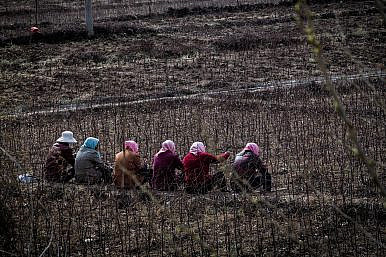By Xinling Wang
 Rather than addressing market distortions, China’s government is turning to a more comfortable strategy.
Rather than addressing market distortions, China’s government is turning to a more comfortable strategy.
The Chinese Communist Party recently rolled out a long-term policy on rural and agricultural developments, sending mixed signals for the economy. Calling for rural rejuvenation, the policy unveils the Party’s plan to repair the severely damaged and long neglected sector. The government seems ready to expand infrastructure investments from urban to rural China as part of its emphasis on equal development for the countryside.
However, despite long-term concerns over factor market distortions, which subsidize manufacturers, the new policy continues government control over the allocation of rural labor and land.
After making its debut at the 19th Party Congress in October 2017, the rural vitalization strategy was also written into the Party’s Constitution, securing its position regardless of government transitions. With details to come, this policy sheds some light on the Party’s vision for the countryside. Responding to growing social discontent and environmental degradation, the government is attempting to improve living conditions for rural residents while preventing further environmental deterioration. By supporting scaled farming and market penetration, the government also aims for increased efficiency from modern practices and higher incomes for farmers.
Despite these good intentions, the policy does little to correct the price distortions of two factors rich in the countryside: labor and land. By controlling their allocation, the government suppresses the prices of land and labor while subsidizing manufacturers. Instead of promoting freer flows of human resources, including labor, the policy is consistent with the government’s population management approach. After banning migrants from settling down in tier-one cities, the government now attempts to keep farmers in the countryside by making it more attractive. Despite constant criticism that population caps violate economies of scale and thus reduce productivity, the administration has shown no sign of reversing its position. In fact, Beijing and Shanghai saw first their first population reductions in 2017, thanks to harsh government measures to evict some industries and dependent populations.
When it comes to cheap rural land, another implicit subsidy for producers, the policy does propose a measure to spread land added value across provincial borders. Allowing a quota for construction land from less prosperous provinces to be sold to richer ones willing to pay higher prices, the long-awaited measure has the potential to redistribute nationwide added value of land from urbanization. Although the government will closely watch the scale and speed of quota transfers, with this measure adopted, its implementation looks more promising than ever before.
Besides continuing the current factor market distortions, the proposed rural infrastructure developments resemble initiatives in urban areas. Investment-driven expansion in China has not only led to numerous empty homes even ghost towns, but also underused roads and railways. To make it worse, increasing spending on constructions means shrinking funds available for pensions, healthcare, and education. With an ever aging and declining population, it remains to be seen how much the improved infrastructure will contribute to improved productivity.
Xinling Wang is a Beijing-based analyst, writing on China’s macroeconomic policy.
No comments:
Post a Comment